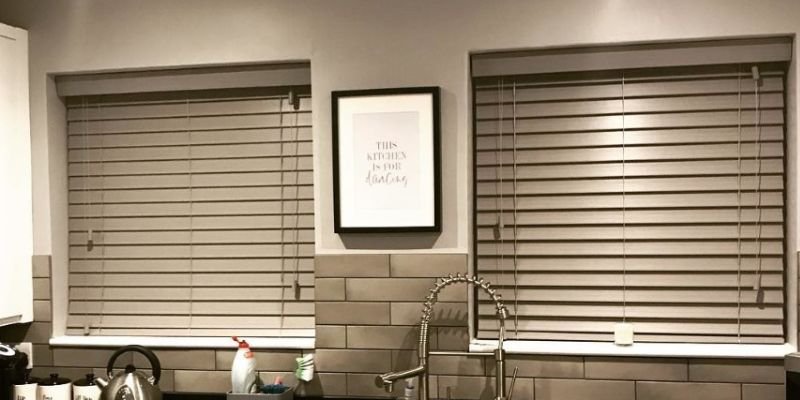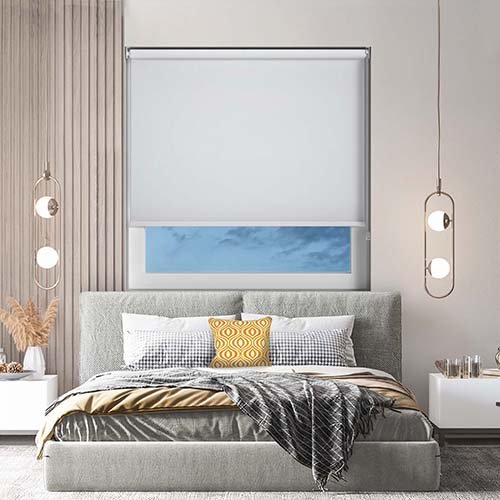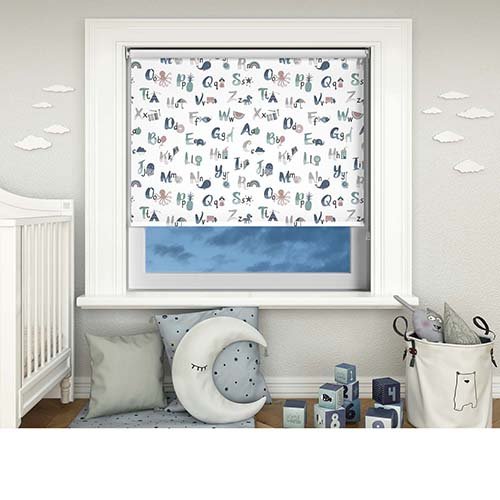Are Wooden Blinds Better Than Plastic?

When it comes to traditional and comforting design, wooden blinds take the lead. Used for many years to keep our homes warm, help control light, and prioritise privacy, they are an ideal choice for many rooms around the home. As technology has progressed, wooden blinds have become available in more colours, styles, and sizes to suit your windows. However, along with this has come the rise in plastic blinds that are promising to be cheaper, more lightweight, and more durable for busy family homes. So the question here is, are wooden blinds better than plastic? Or can you save money and still get a fashionable, sleek room?
What are wooden blinds?
Firstly, let’s establish exactly what we’re looking at with both sides of the argument. Wooden blinds are made up of multiple wooden slats that sit within a corded frame. They are intrinsically linked to one another, moving in unison to rotate open, closed, or too many different angles. In addition to this, you can also use the pull cord to retract the blind upwards and reveal the entire window - if you’re looking to optimise on light, for example.
Wooden blinds can be made in a wide range of different wood types. This gives you flexibility on the style and look you’re trying to achieve. If it’s a dark and moody space, opt for mahogany or walnut. If you want something lighter that makes your windows look larger and pairs well with a minimalist space, you may consider oak or maple. With all of these, you’ll be able to appreciate the natural grain of the wood throughout each slat or paint them to a colour of your choosing. When made to measure, they offer good window coverage, light control, and the ability to dictate privacy with ease too.
What are the benefits of wooden blinds?
Wooden blinds have long been favoured for their classic elegance but it isn’t just in their aesthetics that they offer benefits. Alongside this, offers several other benefits.
Insulation
Wood is a natural insulator and can help to trap heat within a room, preventing it from being lost out of the windows. This not only keeps your space more comfortable but reduces the demand for central heating, in turn cutting down on your bills and making your home more efficient. During the summer, it can also mean you turn off fans and air conditioning more often, equally slashing your impact on the environment.
Increased privacy
Unlike roller blinds, wooden blinds allow you two operation options. This improves your ability to take control of privacy. You can angle the slats according to the light availability, making it impossible for passers-by to see in. Equally, if you want to be able to see out into the garden or onto the street, retracting the blind up will expose the window fully. Either way, you gain increased privacy and options to improve the usability of your space.
Highly durable
Wooden blinds are strong - it's like the material itself. No matter how slim the slats are, they can withstand constant use without warping or becoming easily damaged. Most real wood options will have protective varnishes applied to further prolong their lifespan too.
Reduced maintenance
Fabric window coverings, such as roller blinds or vertical blinds, are prone to staining. Aluminum Venetian blinds can become easily bent out of shape and require replacing or further repair. In contrast, wooden blinds won’t allow dirt to penetrate through the surface or become discoloured due to exposure. To keep them looking their best, you simply need to dust the surface or wipe them down with a damp cloth.
What are plastic blinds?
In contrast, plastic blinds are - as the name suggests - options manufactured from plastic. Some of the most popular options include Rigid PVC Vertical Blinds or PVC Venetian Blinds. The latter is the most similar to wooden blinds, with the same multiple-slat horizontal design that rotates or collapses up. Rigid PVC Vertical Blinds also feature slats, but these hang vertically from a top runner rail. They rotate in unison and can be pulled over to one side using a pull cord, exposing longer windows or patio doors for easy access.
What are the benefits of plastic blinds?
PVC or polyvinyl chloride is one of the most commonly used thermoplastic polymers in the world. It has been chosen for window blinds for a number of reasons, including:
UV Protection
Constant exposure to sunlight can cause certain materials to become damaged or warped. PVC has an integral UV protection built into the design, that reduces the risk of premature wear and also helps to minimize fading on soft furnishings and paintwork too. This protection also means PVC or plastic blinds can trap solar heat and keep a room warmer during colder months.
Lightweight
PVC and plastic is an incredibly lightweight option. If your walls are unable to withstand excessive weight or if you want to install them on your own, having a light window blind can make the process considerably easier.
Low-cost
Plastic is considerably cheaper than other materials, such as wood. It also had a good cost-to-performance ratio making it one of the most cost-effective solutions on the market.
Sustainable
The manufacture of PVC requires very little carbon emissions due to more than 50% of its composition being made up of chlorine and derived from salt. It is also easily recyclable and has a longer life span before finding itself at the dump. The thermal properties we mentioned above help you to save money on heating bills, further reducing your impact on the environment.
Water-resistant
Some rooms in the home are more prone to high water content - namely the bathroom and kitchen. In these spaces, porous material will draw in this moisture. This can cause damage and/or, in the case of both wood and fabric, encourage the growth of mould spores and organisms too. PVC is a naturally water-resistant material that won’t warp or become damaged in these demanding environments.
Fire Retardant
Finally, PVC is fire retardant - again due to the high chlorine levels. This offers a degree of safety within your home and reduces the risk of fire spreading throughout a property.
Wooden blinds or plastic blinds?
So, which option is best? As with any choice within your home, it has to come down to personal preference and suitability in a space. Wooden blinds have a classic and elegant style with a weight that makes them feel more luxurious. They come in several deeply grained and opulent wooden tones, helping you to pick out accents from other furniture or accessories in a space. They are also an investment piece, providing you with many years of service and return, once purchased. And, because of their durability and low maintenance, allow you to keep them hanging for as long as you desire. Wooden blinds are perfect for bedrooms or living rooms - those spaces where you deserve a touch of luxury to indulge in.
Plastic blinds are a cheaper option. PVC is also a strong solution that can withstand exposure to UV rays while being ideal for rooms including the bathroom and kitchen. These blinds come in a vast array of colours and styles to suit your home and can be the right choice if you want to take environmental health into mind. So, in short, both wooden and plastic blinds have a host of benefits to offer and it should be down to the needs of a specific room as to which one you decide on.
Faux wood blinds - are they the answer?
If you’ve fallen for the luxurious look of wooden blinds but still want the water resistance or UV protection of plastic blinds, why not consider faux wood blinds? This way you get the same sleek and effortlessly elegant look that wood affords with the same benefits as PVC. Made to measure for the perfect fit and available with either 35mm or 50mm slats, they are easy to clean and bring that wood grain into your space effortlessly too. At Lifestyle Blinds, we have a wide range of wooden blinds, rigid PVC vertical blinds and faux wood blinds - all so you can find the most appropriate solution for your home. Browse our website here or speak to a member of the team for more information here today.






















































































